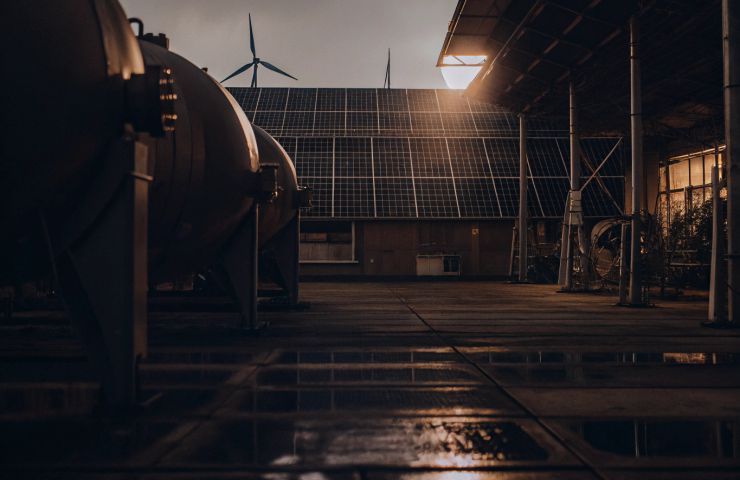
Sustainable Aviation Fuel Gets a Big Boost in Sheffield with Power-to-Liquid Breakthrough
July 31, 2025Big Splash in Aviation Sustainability
Things are taking off—literally—when it comes to sustainable aviation fuel (SAF), and the University of Sheffield is leading the charge. Backed by a £1.5 million grant from the UK Department for Transport, Sheffield has launched the NextGen-SAF project, aiming to make green aviation fuel not just possible, but practical, scalable, and actually carbon-neutral. Housed in the university’s Energy Innovation Centre, this isn’t another science fair project—it’s a bold effort to reinvent how we power the skies.
The Real Kicker: Power-to-Liquid Tech
The magic behind all this? A game-changing process known as Power to Liquid (PtL). Instead of relying on old-school sources like used cooking oil or plant waste, PtL uses something much cleaner and simpler: just renewable electricity, water, and CO₂. Seriously—that’s it.
Here’s the step-by-step: electricity from solar or wind splits water into hydrogen. At the same time, carbon dioxide—captured either straight from the air or off the back of a smokestack—is introduced into the mix. Then comes the heart of the process: an Advanced Fischer-Tropsch reactor that fuses it all into synthetic hydrocarbons. Those hydrocarbons are refined into jet-grade fuel. It all comes together in one streamlined demo plant based right in Sheffield, once famous for steel, now making a name for itself in clean tech innovation.
Real-World Team, Real-World Impact
This isn’t just a university pipedream—it’s a true collaboration between academia, the private sector, and government. The team includes heavy hitters like Fuel Cell Energy (they know hydrogen and carbon capture inside out), Drax (a renewable energy leader), Green Lizard Technologies (process innovation pros), and Leeds Bradford Airport (who bring real airport know-how). Throw in support from Airbus, Boeing, and Qatar Airways, plus a thumbs-up from UK Aviation Minister Mike Kane, and it’s clear this thing has serious momentum.
Let’s not forget—Sheffield played a pivotal role in the world’s first 100% SAF-powered transatlantic flight through the Flight100 project. So yeah, this city knows what it’s doing.
Kicking Old-School SAF Challenges to the Curb
Traditional SAF options? They’ve been bogged down by limited supplies of feedstocks like fryer grease and plant scraps. It’s a clever idea, but not exactly future-proof. PtL sidesteps all of that by using resources we’ve got in abundance: water, CO₂, and sunshine (or wind, if you’re in the UK). That means a cleaner, more scalable SAF supply that’s less tied to complex logistics—and more resilient to global hiccups.
With the UK chasing its net-zero target by 2050, this tech couldn’t be coming at a better time. Aviation is one of the hardest sectors to clean up, but PtL could be the missing link that finally cracks the code.
Collateral Wins: Jobs, Economy, and Energy Security
This isn’t just about flying cleaner—it’s about powering up the UK economy in the process. The project’s expected to deliver high-skilled green jobs, boost energy independence, and cement Sheffield as a global hub for industrial decarbonisation. It’s part of a wider £63 million green aviation investment spread across 17 projects—though Sheffield’s bid is already turning heads thanks to its ready-to-go infrastructure and serious know-how.
And the UK SAF Clearing House, also based at the University of Sheffield, will speed up certification and regulation processes. That means less red tape and more aircraft actually running on the stuff—not just in theory, but in practice.
What’s Next?
The pilot facility is scheduled to switch on in July 2025, and that’ll be the real test. If it performs like the team expects, it could become the template for similar projects—both across the UK and around the globe. The model is clear and repeatable, which opens the door to fast, widespread adoption.
Bottom Line?
This isn’t just a cool lab experiment—it’s a serious leap toward the future of flying. By pulling together clean energy, cutting-edge tech, and a rock-solid team of experts, the NextGen-SAF project hits multiple goals at once: carbon reduction, job creation, and energy security.
If the aviation industry’s going to take the plunge into greener skies, this is the kind of big, bold tech we’ll need to get airborne—figuratively and literally.



 With over 15 years of reporting hydrogen news, we are your premier source for the latest updates and insights in hydrogen and renewable energy.
With over 15 years of reporting hydrogen news, we are your premier source for the latest updates and insights in hydrogen and renewable energy.